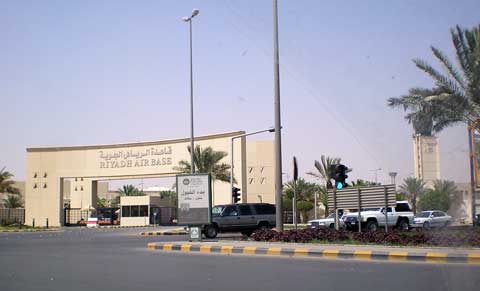Located in the heart of Saudi Arabia, Riyadh Air Base serves as a crucial hub for military operations in the Middle East. This sprawling airfield is home to a variety of aircraft and personnel, and its strategic location allows it to provide vital support to military operations throughout the region.
The history of Riyadh Air Base dates back to the 1940s, when it was initially constructed as a small airfield. Over the years, the base has undergone several expansions and upgrades, and today it is one of the largest and most advanced military airfields in the world.
One of the key features of Riyadh Air Base is its extensive runway network. The base boasts multiple runways, including one that is over 12,000 feet long, which allows it to accommodate virtually any type of military aircraft. In addition to its runways, Riyadh Air Base also features a variety of hangars and maintenance facilities, which provide crucial support to the aircraft and personnel stationed there.
Riyadh Air Base – location
Another important aspect of Riyadh Air Base is its location. Situated in the heart of the Middle East, the base is strategically positioned to support military operations throughout the region. It is within easy reach of many of the most important hotspots in the Middle East, including Iraq, Iran, and Syria, making it an essential hub for military operations in these areas.
Riyadh Air Base – role
Riyadh Air Base is home to a variety of military units, including fighter squadrons, transport squadrons, and support units. These units are responsible for a wide range of missions, including aerial reconnaissance, air support for ground troops, and transport of personnel and equipment. The base also houses a number of air defence units, which are tasked with protecting the base and its personnel from enemy threats.
In addition to its military operations, Riyadh Air Base also plays an important role in the local community. The base provides employment opportunities for thousands of Saudi citizens, and it has also contributed to the development of the surrounding area. The base’s medical facilities, for example, have provided care for both military personnel and local citizens alike.
Riyadh Air Base is a vital hub for military operations in the Middle East. Its strategic location, extensive runway network, and advanced facilities make it an essential asset for military planners in the region. And with its long history of service and commitment to excellence, it is sure to remain a critical component of military operations in the Middle East for many years to come.
Riyadh Air Base – history
The Riyadh Air Base has a fascinating history that spans several decades. Originally built by the U.S. Air Force in the early 1950s, it was designed to be a strategic air transport hub for the Middle East. The base was strategically located near the capital city of Riyadh, making it an ideal location for supporting military operations in the region.
Over the years, the base has been used by various branches of the U.S. military, including the Air Force, Navy, and Army. During the 1990-1991 Gulf War, the base was used as a staging ground for the coalition forces that liberated Kuwait. It was also used during the early stages of Operation Iraqi Freedom in 2003.
In addition to its military uses, the Riyadh Air Base has also played an important role in humanitarian efforts. In 2015, the base served as a hub for the U.S. military’s response to the Yemeni Civil War, providing logistical support for aid deliveries and evacuations of U.S. citizens from Yemen.
The base is also home to the King Khalid Air Base Hospital, a joint venture between the U.S. military and the Saudi Arabian government. The hospital provides medical care to both military personnel and civilians in the region.
The Riyadh Air Base has undergone several upgrades and renovations over the years to keep up with changing technologies and operational requirements. The most recent renovation was completed in 2019, which included upgrades to the base’s air traffic control tower and runway.



















